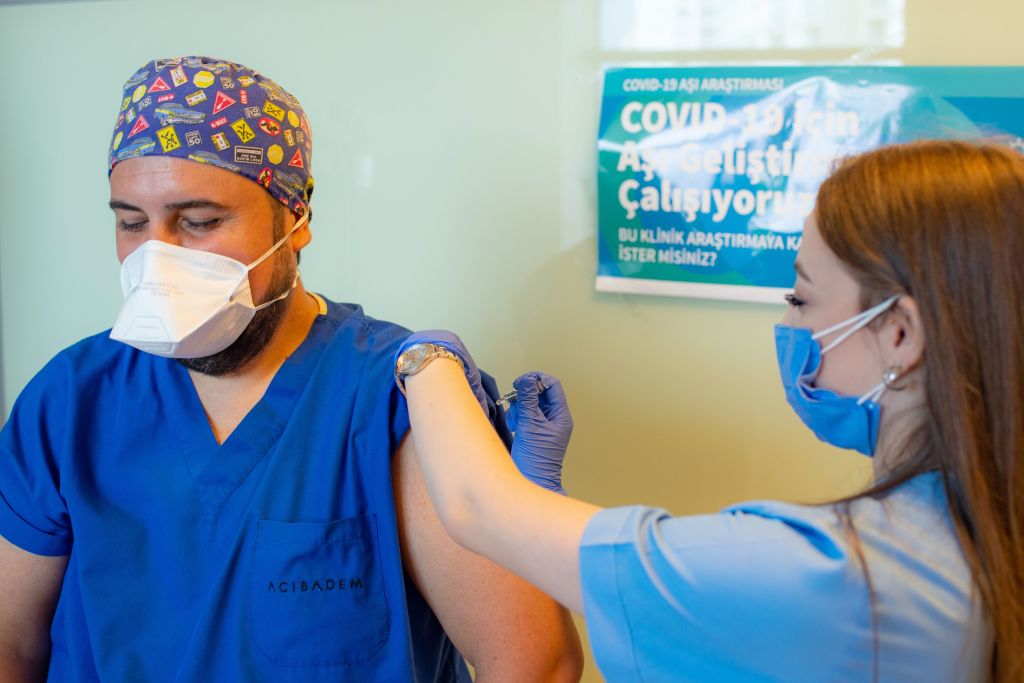If the Pfizer-BioNTech vaccine gains regulatory approval by Christmas, we can cheer the scientists for heroic work.
But tough decisions lie ahead: Who should get the vaccine first? https://trib.al/RtnmyWd
But tough decisions lie ahead: Who should get the vaccine first? https://trib.al/RtnmyWd
 Pfizer expects to produce up to 50 million vaccine doses in 2020 and up to 1.3 billion in 2021, to be split between several nations.
Pfizer expects to produce up to 50 million vaccine doses in 2020 and up to 1.3 billion in 2021, to be split between several nations.The U.K. has ordered 40 million, enough to vaccinate 20 million people in two doses http://trib.al/RtnmyWd
Countries have started to outline strategies to ration the vaccine:
 U.K. plans to start with the very old, care home & health care workers, before moving down the age brackets
U.K. plans to start with the very old, care home & health care workers, before moving down the age brackets
 Germany will vaccinate at-risk groups first, along with nurses and doctors http://trib.al/RtnmyWd
Germany will vaccinate at-risk groups first, along with nurses and doctors http://trib.al/RtnmyWd
 U.K. plans to start with the very old, care home & health care workers, before moving down the age brackets
U.K. plans to start with the very old, care home & health care workers, before moving down the age brackets Germany will vaccinate at-risk groups first, along with nurses and doctors http://trib.al/RtnmyWd
Germany will vaccinate at-risk groups first, along with nurses and doctors http://trib.al/RtnmyWd
But what if vaccinating the elderly first isn’t the best way to minimize fatalities?
A recently published model from three academics suggests priority should be accorded to groups with the highest number of daily in-person interactions http://trib.al/RtnmyWd
A recently published model from three academics suggests priority should be accorded to groups with the highest number of daily in-person interactions http://trib.al/RtnmyWd
Prioritizing those with the most contacts could reduce total fatalities by up to 70% and amplifies the vaccine’s effectiveness by reducing infections among:
 The vaccinated group
The vaccinated group
 The vaccinated group’s contacts http://trib.al/RtnmyWd
The vaccinated group’s contacts http://trib.al/RtnmyWd
 The vaccinated group
The vaccinated group The vaccinated group’s contacts http://trib.al/RtnmyWd
The vaccinated group’s contacts http://trib.al/RtnmyWd
Taking this approach would change the priority list somewhat, into perhaps something that looks like:
 Health-care workers
Health-care workers
 Young workers
Young workers
 Hospitality sector staff
Hospitality sector staff
 Children http://trib.al/RtnmyWd
Children http://trib.al/RtnmyWd
 Health-care workers
Health-care workers Young workers
Young workers Hospitality sector staff
Hospitality sector staff Children http://trib.al/RtnmyWd
Children http://trib.al/RtnmyWd
Seasonal flu vaccination programs are a case in point. Flu deaths don’t decline significantly from programs just targeted at the elderly. That’s why some countries have encouraged inoculating children, including:
 Finland
Finland
 Latvia
Latvia
 Slovakia
Slovakia
 The U.K. http://trib.al/RtnmyWd
The U.K. http://trib.al/RtnmyWd
 Finland
Finland Latvia
Latvia Slovakia
Slovakia The U.K. http://trib.al/RtnmyWd
The U.K. http://trib.al/RtnmyWd
The efficacy and safety of a vaccine is also harder to establish among vulnerable or elderly populations.
Vaccinating younger people earlier and faster would help amass more data on the vaccine while also reducing the spread in the population http://trib.al/RtnmyWd
Vaccinating younger people earlier and faster would help amass more data on the vaccine while also reducing the spread in the population http://trib.al/RtnmyWd
75% of deaths are in the 65+ age group, so any unknown safety risk may be worth taking to protect the elderly & the immunocompromised.
But whatever its calculations, governments need to be transparent about their models and the assumptions they contain http://trib.al/RtnmyWd
But whatever its calculations, governments need to be transparent about their models and the assumptions they contain http://trib.al/RtnmyWd
The success of any early vaccination program also depends on how effectively available doses can be deployed. Germany will have:
-60 vaccination centers
-Help from the German military
-Training for medical workers
-A database to keep track of vaccinations http://trib.al/RtnmyWd
-60 vaccination centers
-Help from the German military
-Training for medical workers
-A database to keep track of vaccinations http://trib.al/RtnmyWd
This week brought good vaccine news, but the next steps must be carefully planned.
We are still far from the point when a vaccine will be available to all. Until then, prioritization and distribution are key http://trib.al/RtnmyWd
We are still far from the point when a vaccine will be available to all. Until then, prioritization and distribution are key http://trib.al/RtnmyWd

 Read on Twitter
Read on Twitter











